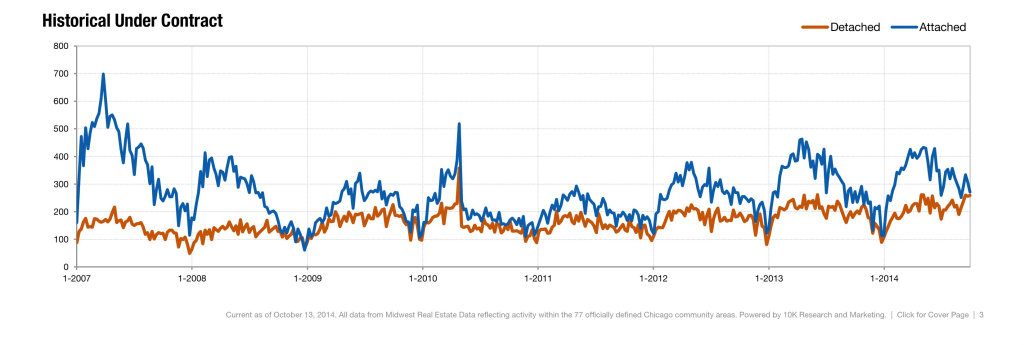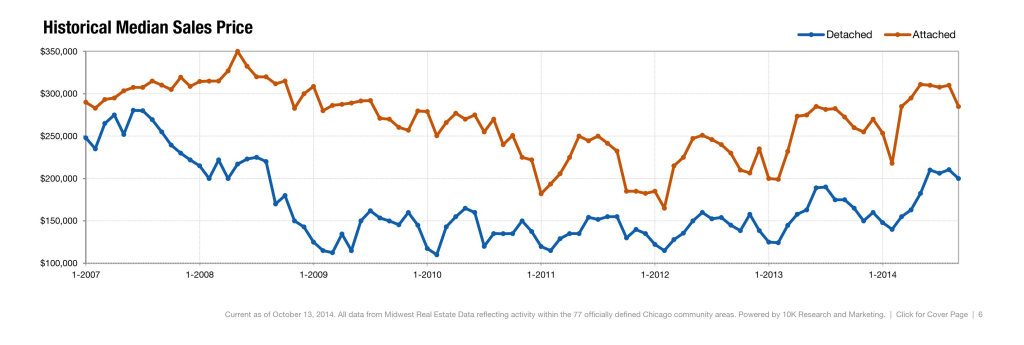While the real estate market seems to have an erratic and unpredictable behavior, it really doesn’t. Taking a step back and looking at the patterns of both demand and price historically can give you a clear view of how to time your purchase. The past seven years of home sales, including the recession have the same peaks and valleys year after year (see: Historical Under Contract). The peak of market activity hovers around March/April and declines through the remainder of the year. Those peaks, however are a result of buyers that started their search in January and spent the next 2-3 months searching or competing against the rest of the buyers out looking.
Coincidentally, the patterns of median sales price follow suite almost identically. It makes sense. If demand is low, prices come down. Why is demand low? You already know the answer…the holidays. Undoubtedly the most unappealing time to conduct a home search. Most of us are focused on the myriad of meals, parties and shopping that accompanies the months of October, November, and December. For the savvy buyer, the fall market, although a smaller inventory,  offers buyers a chance to position their purchase at the low. Last year the median sales price for condos in Chicago fluctuated from $255,000 in November of 2013 up to $311,000 in May of 2014. That is over a 21% gain. While the long term trends require a crystal ball, the annual patterns are, well, pretty predictable.
offers buyers a chance to position their purchase at the low. Last year the median sales price for condos in Chicago fluctuated from $255,000 in November of 2013 up to $311,000 in May of 2014. That is over a 21% gain. While the long term trends require a crystal ball, the annual patterns are, well, pretty predictable.
If a home search was part of your start of the new year plan, you might want to get started a little earlier. Hey, make your brother cook the turkey. He won’t mind.
Source: Chicago Association of Realtors


